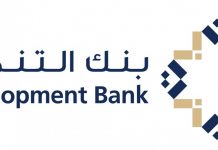The Central Bank of Oman’s stimulus package that will inject RO8 billion ($21 billion) in the economy to reduce the economic effects of the coronavirus pandemic, will limit the economic blow of the coronavirus outbreak on the Omani economy, but weaken banks’ credit profiles, a credit negative, according to Moody’s Investors Service.
The stimulus package contains several measures. It reduces banks’ capital conservation buffer (CCB), allows deferment of loan instalments for hard-hit borrowers, postpones for six months the risk classification of loans related to government projects and eases access to repo operations and foreign currency swaps for the banks. The central bank has also increased the regulatory cap on banks’ loans-to-financing ratio. Systemwide banking system assets in Oman (Ba2 stable) were $91 billion as of January 2020.
The central bank’s reduction in CCB buffers is credit negative for Omani banks because it lowers their minimum regulatory solvency capital requirements during a difficult time. Nonetheless, the lower regulatory buffers give banks greater flexibility to support borrowers facing temporary liquidity issues. In addition, Omani banks’ regulatory capital requirements will remain high. They must hold a minimum 11.5% Tier 1 capital ratio, including a 7% minimum CET1 capital ratio, 200 basis point (bp) maximum in Additional Tier 1 capital and a 250 bp CCB in the form of CET1 capital. The stimulus package allows banks to reduce their CCB by half to 125 bp.
The deferment of loan instalments for affected borrowers, as well as the six-month delay in the risk classification of loans for government projects, will reduce banks’ immediate recognition of problem loans arising from coronavirus-related disruption. Should the measure remain in place over the long term, it would lower transparency of the extent of problem loans in the banking system and reduce forecasting visibility regarding the banks’ credit profiles.
“We expect Omani banks’ asset quality to materially deteriorate in the current difficult environment. The stimulus package will mitigate the extent of the deterioration by keeping some borrowers’ liquidity issues from becoming solvency issues. The package will not fully offset loan quality challenges, particularly if the pandemic persists for longer than a few months. Systemwide, problem loans were 3.2% of gross loans as of December 2019. We expect borrowers in the tourism, transportation, trade, real estate and construction sectors to be the most affected by the coronavirus outbreak, and small and medium enterprises to be particularly vulnerable to economic shocks. As of December 2019, credit to the trade sector (import, export, wholesale and retail) accounted for 8.9% of systemwide lending; credit to the transport and communication sectors was 5.0%; and credit to the construction sector was 9.2%.”
Even before the outbreak, we expected some asset-quality deterioration in Oman because low oil prices have dented government spending and led to delayed payments for construction and other public work, with a knock-on effect through the economy. The pandemic will exacerbate the deterioration. The recent sudden drop in oil prices will be another headwind. Oman’s economy is highly dependent on the oil and gas sector, accounting for 34% of GDP and over 68% of total merchandise exports in 2019.
Nonetheless, Omani banks benefit from strong solvency buffers, including strong capital (14.4% tangible common equity to risk-weighted assets, as of December 2019) and healthy problem loan coverage (94% loan loss reserves to problem loans). In addition, the strong and conservative regulatory framework in Oman supports banks’ credit profiles, with strict limits on cross-border exposure, foreign-currency exposure, retail lending exposure, debt burden ratios, balance-sheet mismatch and cash dividend distribution.
The central bank’s financial support package will support Omani banks’ liquidity by providing access to cheap funding in order to meet cash calls from affected borrowers. The central bank reduced the interest rate on repo operations by 75 bp to 0.5%, increased the tenor of repo operations up to a maximum period of three months, reduced the interest rate on discounting of Oman Government Treasury bills by 100 bp to 1.0%, reduced the interest rate on foreign currency swap operations by 50 bp and increased the tenor of the swap facility up to a maximum period of six months. The central bank also reduced the interest rate on rediscounting of bill of exchanges and promissory notes.
The increased regulatory cap on banks’ lending to financing ratio will also allow banks to meet cash calls from affected borrowers more easily. The central bank has increased the regulatory cap by five percentage points to 92.5% from 87.5%.






